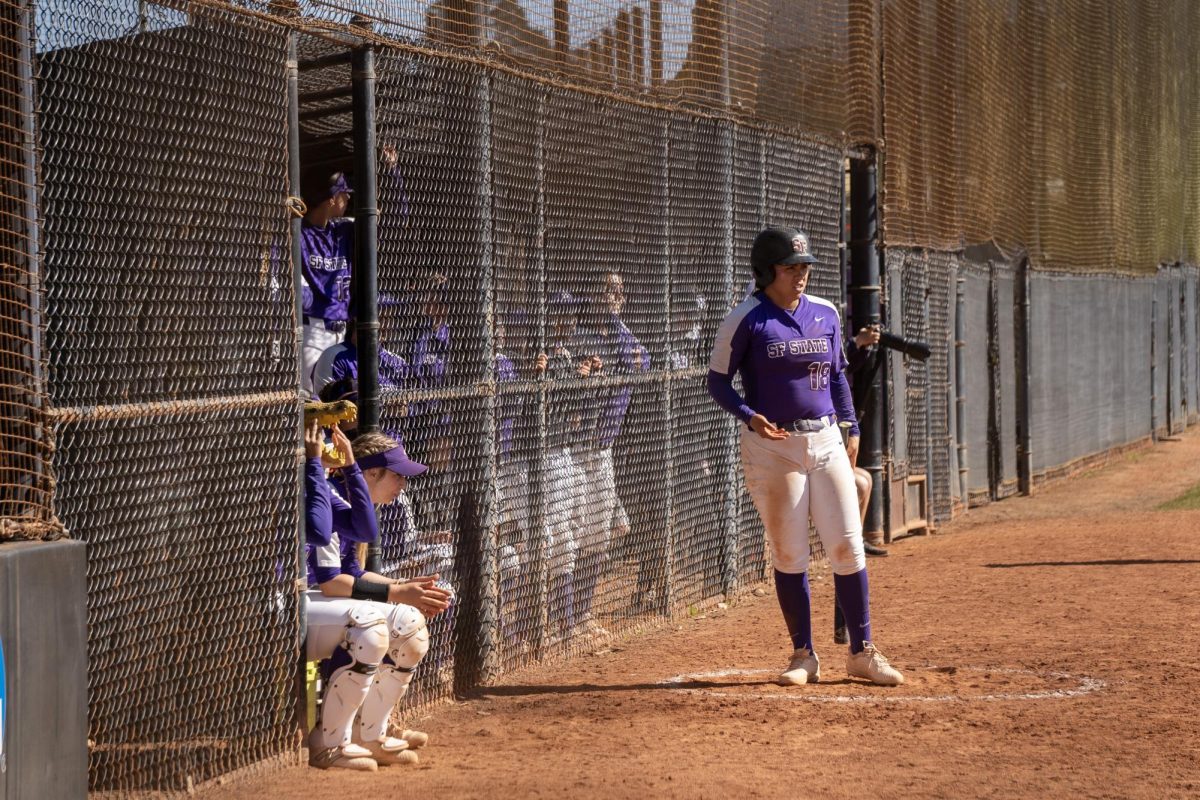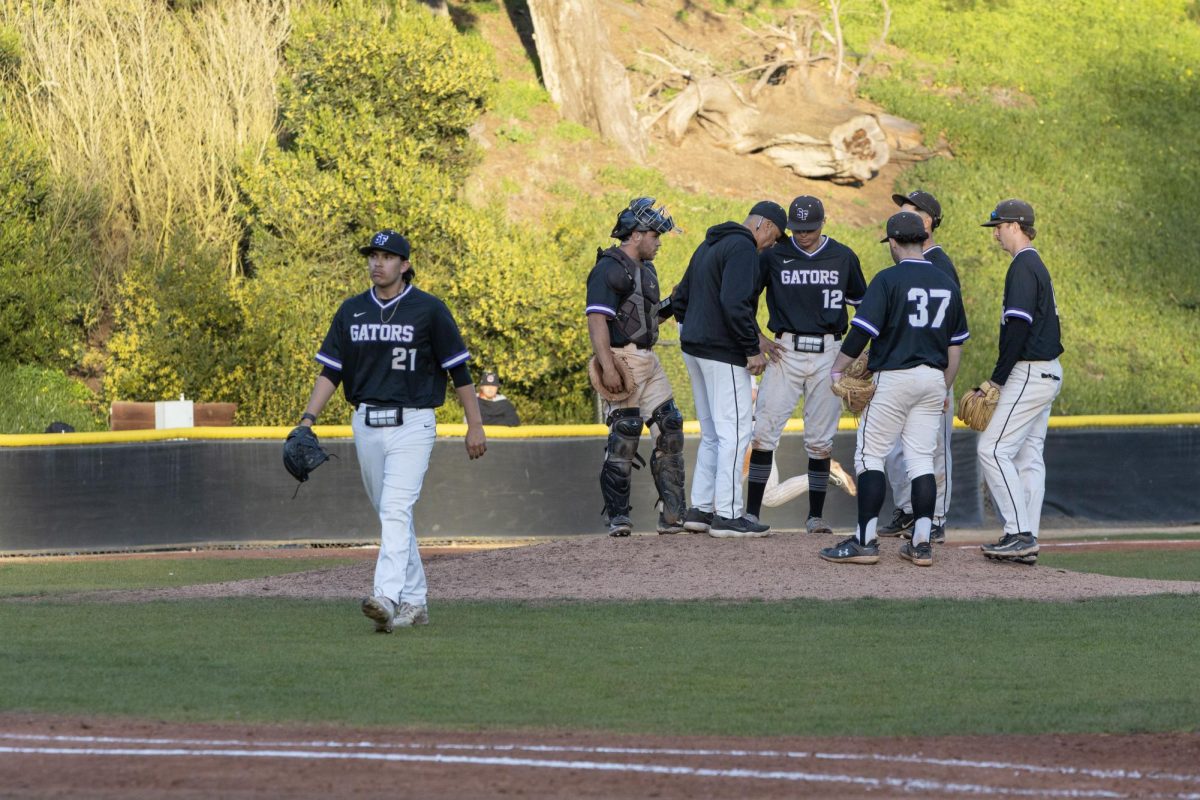They are SF State’s only Division-I representatives. In 2012, they enjoyed their first undefeated season. On Saturday, they finished fourth in the grueling Pac West Sevens Tournament at Sacramento State, bringing home the Shield award.
They are the Gators Rugby Football Club, and to date, their toughest opponent is the school they represent.

Over its nine-year history, the GRFC transformed from a social club to a Division-I contender, taking on tough competition from all over California along the way. Since its inception, the GRFC made a home in the middle of the San Francisco Bay, playing its games on the Fog Rugby Pitch on Treasure Island.
However, team captain Lukas Zanoli said the league recently advised the club to find a new home pitch due to several hazards on the field, including metal sprinkler heads in the playing area and drainage grates on the sidelines.
What the league doesn’t know is that the GRFC has been trying to move for years. It petitioned SF State to use Cox Stadium several times and, until now, the school remained silent.
“We’re here and we’re knocking on the door,” Zanoli said. “We’re doing something here, we’re doing something big with SF Gators Rugby. We just want to know, what can our club do for the school to make this happen?”

The team’s first attempt to move its home games onto the SF State campus came back in 2011, according to former team President Tristan Hayter.
“I remember hearing at meetings that we were in the process of trying to get it,” Hayter said. “We were trying to get some home games there to get a crowd and have it more local.”
Still a Division-II squad in the Northern California Rugby Football Union at the time, Hayter said the GRFC reached out to administration in hopes of earning a few home games in Cox Stadium, but failed.
The team’s next attempt, which came at the close of the Spring 2014 semester, was to host a sevens tournament – similar to the one the GRFC played in over the weekend – at Cox Stadium in November.
Hayter submitted the eight-page proposal, which included the team’s history, intended uses for the field, associated costs, and benefits for the school, to Ryan Fetzer in the Intramurals and Sports Clubs Office. Hayter said they hoped it would be passed along to the athletics department.
“We aspire to get to a point where our club can see sustainable growth, through sheer brand recognition,” Hayter wrote in the proposal. “While we have pressed and succeeded through hard times, the GRFC has finally reached a pivotal point in our clubs history. We see the next step in the progression of our club as a strategic partnership with SF State.”
After the summer came and went without a response, Zanoli reached out for the club again. This time, it was two emails—on Sept. 16 and again on Sept. 22—to Jamil Sheared, the game day management coordinator for the athletics department. This proposal included a request to secure Cox Stadium for four home games on Jan. 31, Feb. 7, Feb. 28 and April 4.
Again, the captain’s phone never rang.

“Now that athletics and kinesiology schedules have been finalized for this semester I can move the proposal along,” Fetzer said. “Cox Stadium is a heavily utilized facility. Athletics and kinesiology are given first priority regarding scheduling of that facility.”
He explained that requests to reserve Cox Stadium should be filtered through an online request form on the Campus Recreation website, rather than the athletics department.
“We’re really just tenants, we don’t have specific ownership of any facilities here,” said Director of Athletics Charles Guthrie. “Athletics only reserves the field for intercollegiate related activities.”
But Zanoli contends that the GRFC’s competition is limited only to other collegiate clubs, including Stanford, UC Santa Cruz, UC Davis and San Jose State. Each of those teams has a home field on its respective campus.
“That’s what sets us apart from all the other schools,” Zanoli said. “They can play on campus. We’re not allowed to.”
According to SF State’s website, Cox Stadium is open to the campus and community for recreational purposes. However, Fetzer said no recreational sports clubs currently use Cox Stadium.
“All recreational activities that require a field use the West Campus Green,” he said.
The club originally hoped that the West Campus Green would be their new home once the field’s construction was completed, but Zanoli said rugby won’t work on it.
“They built it too small for rugby,” Zanoli said. “The sidelines are surrounded by a cement border that is only two feet off the sideline. If anybody were to be tackled out-of-bounds they would likely be injured.”
Fetzer said the team has followed all the necessary procedures to use the field, and that those responsible for scheduling Cox Stadium will begin the process of reviewing the proposal.
This club has proven it’s no stranger to adversity, and Zanoli said they won’t stop fighting until it has a new home on campus.
“This has been a long time in the making,” Zanoli said. “We really feel like this is the year that our club is respectable enough, we are organized enough (and) we have the support.”









Jamil Sheared • Mar 5, 2015 at 5:54 pm
That’s funny….I like how they didn’t ask me about the emails that went unanswered….Good to see that this guy did his due diligence….